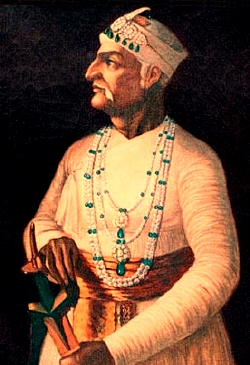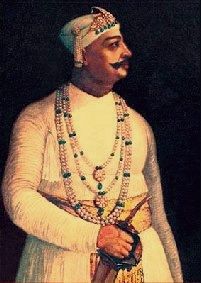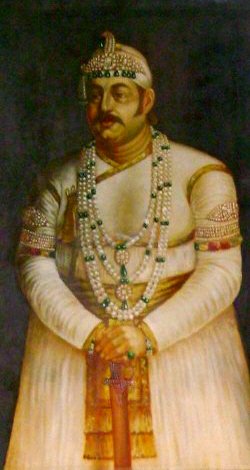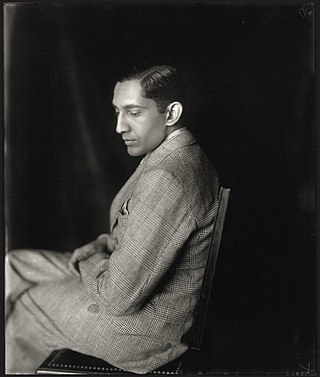Nawab is a royal title indicating a ruler, often of a South Asian state, in many ways comparable to the western title of Prince. The relationship of a Nawab to the Emperor of India has been compared to that of the Kings of Saxony to the German Emperor. In earlier times the title was ratified and bestowed by the reigning Mughal emperor to semi-autonomous Muslim rulers of subdivisions or princely states in the Indian subcontinent loyal to the Mughal Empire, for example the Nawabs of Bengal.

Nizam of Hyderabad was the title of the ruler of Hyderabad State. Nizam is a shortened form of Niẓām ul-Mulk, and was the title bestowed upon Asaf Jah I when he was appointed Viceroy of the Deccan by the Mughal Emperor Farrukhsiyar. In addition to being the Mughal Viceroy (Naib) of the Deccan, Asaf Jah I was also the premier courtier of the Mughal Empire until 1724, when he established an independent realm based in Hyderabad, but in practice, continued to recognise the nominal authority of emperor.

Nawab Mirza Khan Daagh Dehlvi was a poet known for his Urdu ghazals. He belonged to the old Delhi school of Urdu poetry.

Sahebzada Mir Himayat Ali Khan Siddiqi Azam Jah was the eldest son of the seventh and last Nizam of Hyderabad, Mir Osman Ali Khan, Asaf Jah VII and Sahebzadi Azamunnisa Begum, daughter of Sahebzada Mir Jahangir Ali Khan Siddiqi.

Asaf Jah VI, also known as Sir Mir Mahboob Ali Khan Siddiqi, was the sixth Nizam of Hyderabad. He ruled Hyderabad State, one of the princely states of India, between 1869 and 1911.

Mir Osman Ali Khan, Asaf Jah VII was the last Nizam (ruler) of Hyderabad State, the largest state in the erstwhile Indian Empire. He ascended the throne on 29 August 1911, at the age of 25 and ruled the State of Hyderabad between 1911 and 1948, until the Indian Union annexed it. He was styled as His Exalted Highness (H.E.H) the Nizam of Hyderabad, and was widely considered one of the world's wealthiest people of all time. With some estimates placing his wealth at 2% of U.S. GDP, his portrait was on the cover of Time magazine in 1937. As a semi-autonomous monarch, he had his mint, printing his currency, the Hyderabadi rupee, and had a private treasury that was said to contain £100 million in gold and silver bullion, and a further £400 million of jewels. The major source of his wealth was the Golconda mines, the only supplier of diamonds in the world at that time. Among them was the Jacob Diamond, valued at some £50 million, and used by the Nizam as a paperweight.

The Nizam College is a constituent college of Osmania University established in 1887 during the reign of Mir Mahbub Ali Khan, Asaf Jah VI, in Basheerbagh, Hyderabad, Telangana.

Paigah family was a noble family from the former Hyderabad State. The family maintained their own court, individual palaces, and a standing army of about fourteen thousand infantry and cavalry troops.

Mir Nizam Ali Khan Siddiqi, Asaf Jah II was the 5th Nizam of Hyderabad State between 1762 and 1803. He was born on 7 March 1734 as fourth son to Asaf Jah I and Umda Begum. His official name is Asaf Jah II, Nizam ul-Mulk, Nizam ud-Daula, Nawab Mir Nizam 'Ali Khan Siddiqi, Fateh Jang, Sipah Salar, Nawab Subedar of the Deccan. Sawānih-i-Deccan, a Persian work compiled by Munim Khan, a military commander during the era of Asaf Jah II gave more insight about administration of Asaf Jahis.

Sikander Jah, Asaf Jah III, was the 3rd Nizam of Hyderabad, India from 1803 to 1829. He was born in Chowmahalla Palace in the Khilwath, the second son of Asaf Jah II and Tahniat un-nisa Begum.

Afzal ad-Dawlah, Asaf Jah VMir Tahniyat Ali Khan Siddiqi was the eighth Nizam of Hyderabad, India, from 1857 to 1869.
Nawab Sir Ahmed Hussain, Amin Jung Bahadur, KCIE, CSI, LLD (Osmania), MA, BL (Madras) was born in Madras on 11 August 1863 in the family of a leading businessman.

The Asaf Jahi was a Muslim dynasty that ruled the Hyderabad State. The family came to India in the late 17th century and became employees of the Mughal Empire. They were great patrons of Indo-Persian culture, language, and literature, and the family found ready patronage.

Moazzam Jah, Walashan Shahzada Nawab Mir Sir Shuja’at ‘Ali Khan Siddiqui Bahadur, KCIE, was the son of the last Nizam of Hyderabad, Osman Ali Khan, Asaf Jah VII and his first wife Azamunnisa Begum.
Chanchalguda is a neighbourhood in Old City, Hyderabad. It is located near Saidabad and Dabirpura. The Chanchalguda Central Jail is located here.

Mir Hashim Ali Khan was commandant of the 2nd Lancers, Hyderabad Imperial Service Troops.
Justice Pingle Jaganmohan Reddy was Chief Justice of Andhra Pradesh High Court.

Nawab Sir Nizamat Jung Bahadur was an Arab-Indian poet. Nizamuddin was the second son of the Late Nawab Rafath Yar Jung Bahadur, Subedar of Warangal, well known in his days as an ardent educational and social reformer and statesman of no mean order.
The localities and neighborhoods of Hyderabad have unique oral histories, dating to the time of the Qutb Shahi dynasty, over 400 years ago, and are named after various people and things. Some are named after a major building or structure in the locality, others named for individuals. The names are mostly in Telugu and Urdu, the major languages of the city. This is a list of localities, neighborhoods and streets of Hyderabad and their etymology.

Amir-e-Paigah-e-Asman Jahi, Moin-ud-Daula Bahadur Innayath Jung, commonly known as Sir Nawab Muhammed Moin Uddin Khan born at Basheer Bagh Palace in 1891 was an Indian nobleman and member of the Paigah Nobility and the Amir of the Asman Jahi Paigah one of the 3 great Paigahs of Hyderabad State The Paigah Nobility was the second most powerful family in Deccan Hyderabad State maintaining their own court and army bound with Asaf Jahi dynasty by matrimonial relationship, Moin-ud-doula and his father Asman Jah was one of those fortunate individuals to whom it has been given by fate to write their names large in the annals of their country, Moin-ud-doula's father Asman Jah who served as co-regent and Prime Minister of Hyderabad created several marvelous architects throughout the city maintained his army court in his domain Shamshabad, was granted the title of Order of the Indian Empire,















